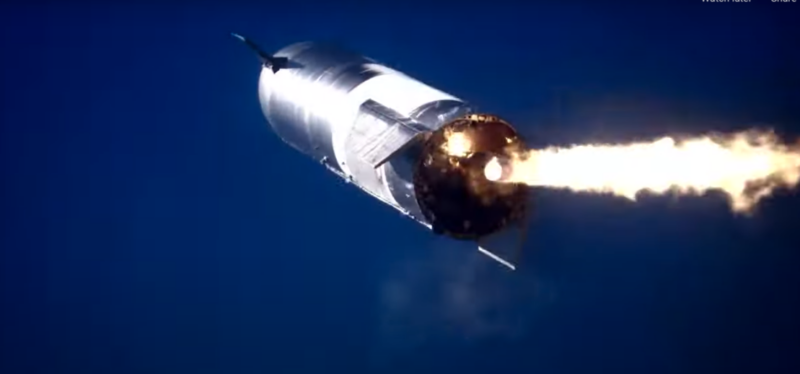SpaceX’s Latest Starship High-Altitude Test Comes to Explosive Ending

SpaceX Starship SN9 test on Feb. 2, 2020. Photo via SpaceX livestream
SpaceX’s latest test of its Starship rocket came to an explosive ending on Tuesday. The 10 km high-altitude test of Starship Serial Number 9 (SN9) was livestreamed from Boca Chica, Texas, and lasted just under six and a half minutes.
In the test, both the third and second engines were shut down at specific points in the flight, and Starship reached 10 km on the power of one engine. About 4 minutes and 35 seconds into the mission, the rocket executed a horizontal flip and began descent to the landing pad where it crashed back onto Earth.
“Reminder, this is a test flight, the second time we’ve flown Starship in this configuration. We got a lot of good data, and the primary objective to demonstrate control of the vehicle in the subsonic reentry looked to be very good,” SpaceX engineer John Insprucker said at the end of the test.
“We’ve just gotta work on that landing a little bit,” he said.
This test had a similar result to SN8 test in December. SN10 could be seen near the landing pad in Boca Chica, and SpaceX said in Tuesday’s live stream that it will be tested soon.
Tuesday’s test went forward with Federal Aviation Administration (FAA) approval after the FAA did not approve the test in time for a planned attempt last week, and co-founder Elon Musk complained about the delay on Twitter. The Verge reported that SpaceX violated the terms of its Federal Aviation Administration test license in the December test, and led to a formal FAA probe.
Musk has set ambitious goals for Starship, which is being designed as a reusable vehicle to take both crew and cargo to Earth orbit, the Moon, and Mars, and also to deploy satellites. Starship is designed to carry more than 100 metric tonnes to orbit — with a payload compartment larger than any fairing in operation or development. Musk has said SpaceX is working toward an uncrewed Mars mission by 2022, and a mission with human passengers by 2024.